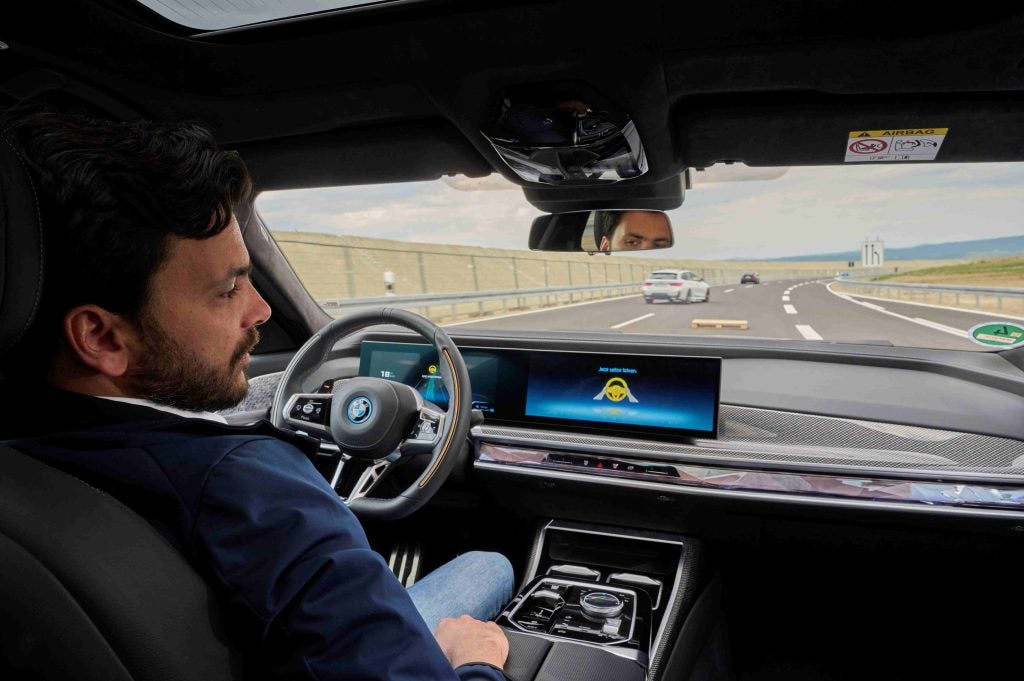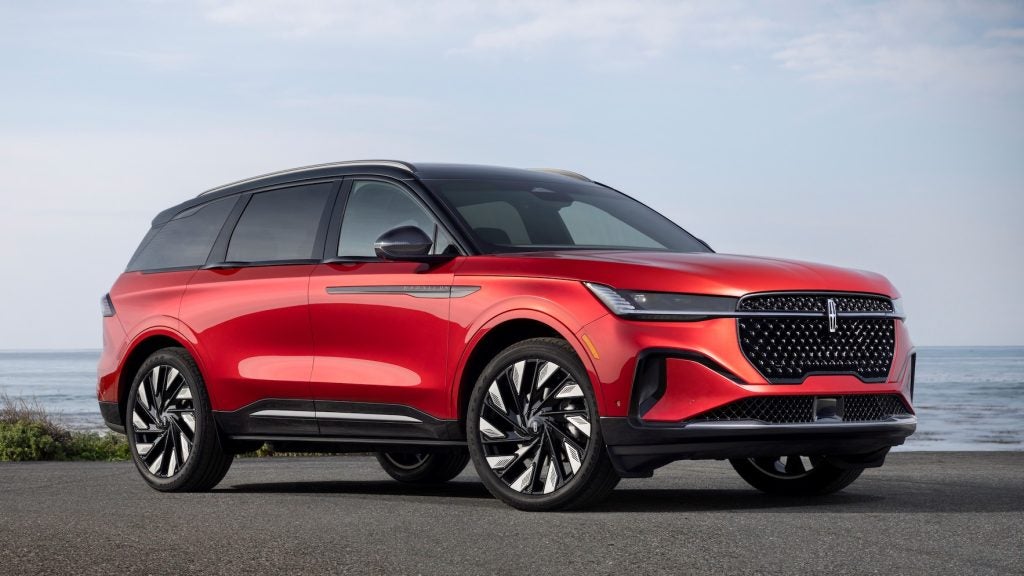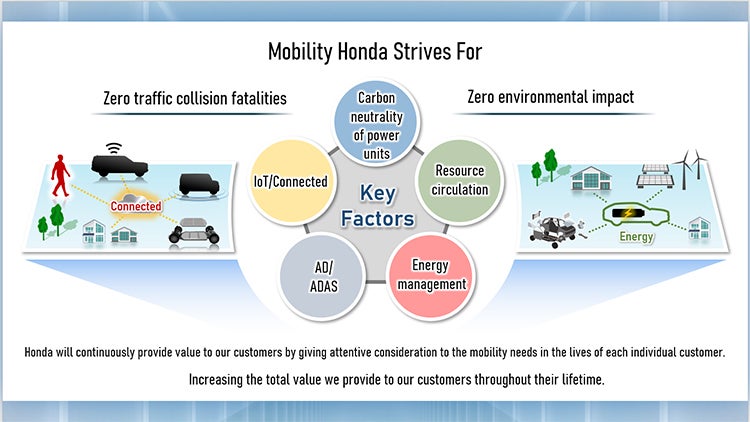
Honda Motor provided a business update at a meeting in Tokyo today, hosted by president Toshihiro Mibe and executive vice president Shinji Aoyama, who announced the amount of fixed costs for the fiscal year ended 31 March 2023 was reduced “by more than 10%” compared to fiscal 2019.
The break even point for FY2023 based on the percentage of production capacity utilisation was roughly 80%, an improvement from roughly 90% in FY2019. The automaker reiterated a FY2026 return on sales (ROS) of 7%.
How well do you really know your competitors?
Access the most comprehensive Company Profiles on the market, powered by GlobalData. Save hours of research. Gain competitive edge.

Thank you!
Your download email will arrive shortly
Not ready to buy yet? Download a free sample
We are confident about the unique quality of our Company Profiles. However, we want you to make the most beneficial decision for your business, so we offer a free sample that you can download by submitting the below form
By GlobalDataFollowing the Covid pandemic-caused shortage of semiconductors, Honda noted it had been building cooperative relationships with semiconductor manufacturers, including a strategic collaboration with Taiwan Semiconductor Manufacturing.
New EVs
Honda would “continue working on the procurement and development of batteries, as well as securing stable procurement of battery materials by building strong partnerships with resource recycling businesses” as it works towards the goal of 100% EV and FCEV sales worldwide by 2040.
In 2024, in North America, the Honda Prologue and Acura ZDX, currently being developed jointly with General Motors, will go on sale. As already announced, a mid- to large-size EV based on a dedicated platform would go on sale there in 2025 while Japan would see an EV based on the N-One concept in 2025 with two small EVs models, including an “SUV type”, following in 2026.
In China, early in 2024, the e:NS2 and e:NP2 will go on sale. Before the end of next year, production models based on the e:N SUV xu concept – unveiled at Auto Shanghai this month- will go on sale.
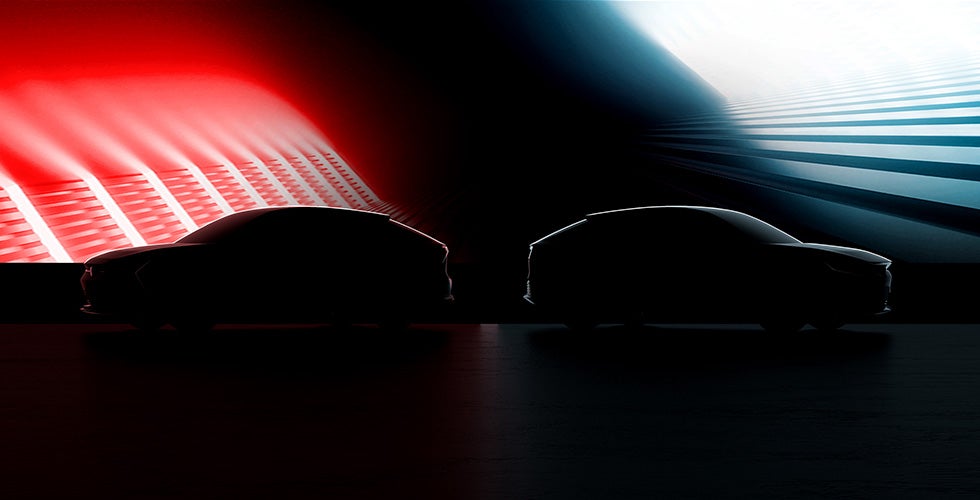
By 2027, Honda will 10 new EVs, including those three above. By 2035, EVs will account for all of its automobile sales in China, ahead of other regions.
In Japan, in the first half of 2024, an N-Van based commercial mini EV model will go on sale followed, in 2025, by an EV model based on the N-One. In 2026, two small EVs, including an SUV, will be launched.
Charging
Honda would also begin offering vehicle charging services. For home recharging, based on SmartCharge, an EV charging service already available in North America, the automaker would launch an energy business which uses the power supply capability of EVs. For public charging, Honda will “work toward the establishment of an EV charging services environment for its customers in collaboration with providers of convenient and reliable charging networks”.
Battery procurement and development
In North America: procurement of Ultium batteries from GM and establishment of a battery production joint venture with LG Energy Solution (LGES). In China: Strengthened collaboration with Contemporary Amperex Technology (CATL) In Japan: procurement of batteries for the N-Van model from Envision AESC.
From the second half of the 2020s, Honda will introduce next generation batteries such as semi solid state and all solid state. It will cooperate with GS Yuasa to develop high capacity, high output, liquid lithium ion batteries for EVs.
Operation of a demonstration line for all solid state batteries should start in 2024 with OEM factory fit in the second half of the decade.
Honda is jointly developing semi solid state batteries (lithium metal secondary) with SES, a battery R&D company.
A strategic partnership with Hanwa will “ensure stable procurement in the medium to long term, of essential metals such as nickel, cobalt and lithium”.
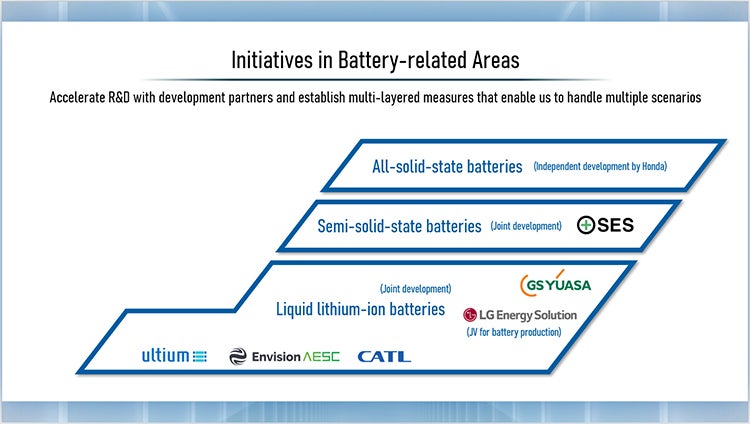
Sustainability
To achieve “zero environmental impact” Honda will use recycled materials through deal with resource recycling operations including Ascend Elements, and Cirba Solutions and POSCO Holdings.
The Saitama factory in Japan will be its Honda’s first carbon neutral plant in FY 2026.
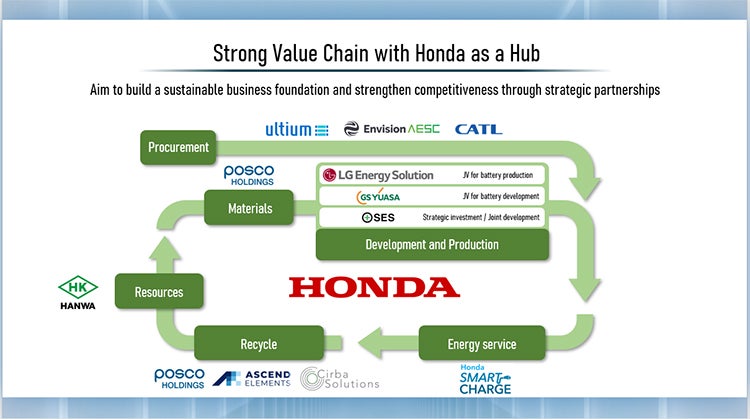
Factory automation
Global reform of its production system for EV models scheduled to go on sale in the second half of the 2020s will see “establishment of production lines which pursue automation and application of intelligent technologies in consideration of future changes in the workforce”, highly efficient factories and supply chains which will enable a shift to EVs in a short period of time and a shift to production processes which reduce CO2 emissions and use a “resource circulation approach”.
Software
Based on the concept of software defined mobility, in which software defines the value of hardware and services, Honda will accelerate software development, further advancing its E&E architecture and developing its original vehicle OS for the mid- to large-size EVs to be launched in North America in 2025 with OTA updates available.
Working toward insourcing of software development in the areas of the vehicle OS, automated driving/advanced driver-assistance system (AD/ADAS) and connected vehicles and services, Honda will double the originally planned number of new hires and also further strengthen recruiting of high level software development specialists. It will accelerate collaboration with companies which have strengths in software development, including KPIT Technologies (KPIT).
Honda will also continue strengthening user experience (UX) and digital services development, mainly in North America, by taking various initiatives including the establishment of a new global user experience officer position and recruiting digital experts.
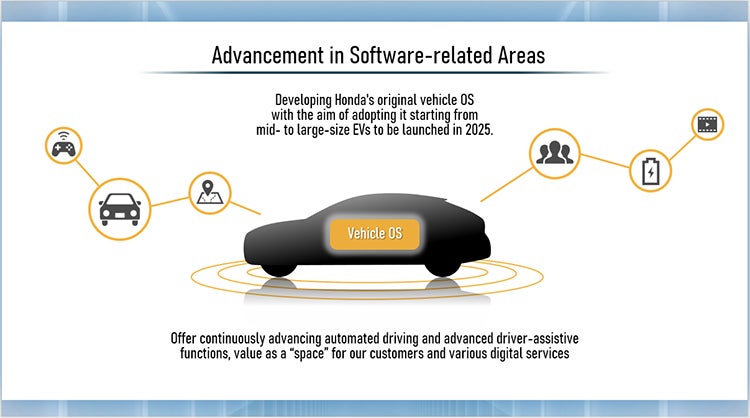
GM alliance
The automaker said it would further strengthen its alliance with GM. In addition to codeveloping a series of affordable electric vehicles which will go on sale from 2027, the automakers will “continue exploring a broad range of collaboration which will combine the respective strengths of the two companies and increase competitiveness in the areas of core electrification components”.
R&D funding
Honda plans to allocate an annual budget of JPY100bn for research into next generation mobility as well as for fundamental research activities, mainly carbon neutrality technology such as the intelligence technology, battery development, hydrogen and sustainable materials.
JPY10bn will be allocated to “proactively pursue open innovation with startups” in technology likely to be needed in future, such as AI, synthetic fuels, battery recycling and nuclear fusion power generation.
Newly established Honda Innovations in Japan will serve as the global head office function for open innovation activities.
The exisiting tagline – ‘The Power of Dreams’ will have the line ‘How we move you’ added.




